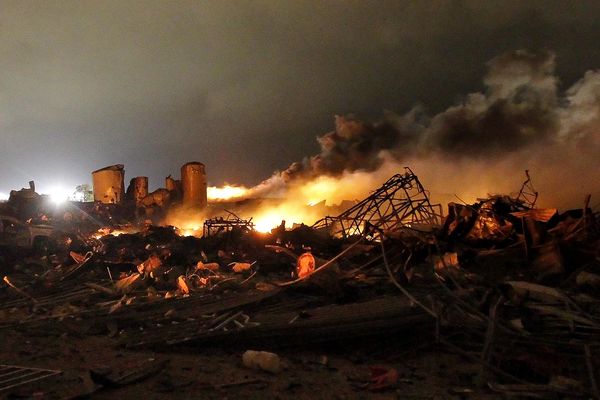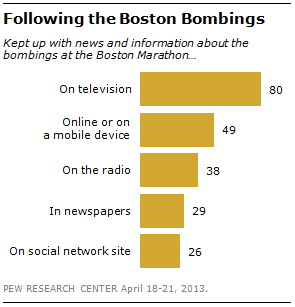Last week was an intense news week, to say the least.
Monday, two bombs exploded at the finish line of the Boston Marathon throwing the city and the country into a state of shock. Wednesday, a fertilizer plant explosion shook the town of West, Texas and the Senate voted down a major gun bill. Thursday and Friday, the chaos in Boston continued, resulting in a lock-down and the death and arrest of the two bombing suspects. And throughout the week, floods inundated the Midwest, sending many areas into a state of emergency.



The developments in these stories occurred rapidly, sometimes virally, as more and more Americans are looking to the internet for the latest news and information. The Pew Research Center for the People & the Press surveyed Americans about the bombing at the Boston Marathon. While television is still the most common (80 percent) news source, nearly half (49 percent) of the adults surveyed said they tracked the news online or with a mobile device. And 26 percent used social network sites.

People shared information with friends on Facebook, followed real-time updates on Twitter, and viewed videos and photographs that painted a vivid picture of the places and individuals impacted, as the events unfolded.
How do you gather the latest news and information? What roles do the internet, social media, and mobile devices play?

